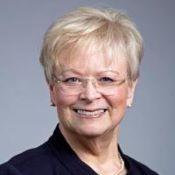Every year, during the third week of March, medical students from across the United States find out where they will go to complete residency training in a specialty of their choosing. Residency programs, including Duke Family Medicine, find out who will be entering training in their institutions.
This year’s notifications happened on March 20 in a process formally known as the National Resident Matching Program (NRMP), and informally known as “the Match.”
Dr. Viviana Martinez-Bianchi, program director of Duke Family Medicine Residency, shared our results last week and celebrated with the team that made it possible for us to recruit a stellar group of interns.
National trend data for family medicine
Many years ago, (when I walked uphill both ways to school in the snow, and when I chose family medicine as a specialty as part of the Class of 1987), 11.9 percent of graduating U.S. medical students matched in family practice (as the specialty was known then). The number of residency positions offered grew from that point until the late 1990s, reaching a peak of 3,293 residency positions for incoming interns in 1998. The number of residency programs in family medicine has been relatively steady at 450-474 residency programs since 1996.
In 2015, 3,195 positions for first-year residents (interns) were offered, and 8.3 percent of graduating U.S. medical students matched in family medicine. The trend has been downward for many years since my graduation, and has recently risen just a bit over time.
A very good analysis of this trend is presented in a 2014 research paper showing five consecutive years of increase, in 2014. With this year’s match, 2015 represents the sixth year of that increasing trend.
These statistics represent a snapshot of the challenges facing our specialty today. We have increased the number of residency programs (though not to the peak level seen in 1998), and existing residency programs have been increasing the number of positions they offer. Duke Family Medicine’s recent addition of a fifth residency slot is an example of this process.
Shortage of primary care physicians
So if we are seeing an increase in the number of positions and the number of residents matching to those positions, what is the challenge?
The issue is this: As a nation, we are not increasing the number of physicians needed to serve our population overall, and we are not increasing the number of primary care physicians needed, either.
Residency programs, and the positions in them for residents, are funded by the federal government. There has not been a significant increase in the number of overall residency positions since the late 1990s, when Congress placed a cap on the number of positions available nationally.
A recent report by the Association of American Medical Colleges (AAMC) indicates that the nation could face a shortfall of 46,000 to 90,000 physicians overall by 2025. For primary care, the shortfall could be between 12,500 and 31,100 providers.
As we here at Duke Family Medicine know, our advanced practice providers (APPs) — physician assistants, nurse practitioners, nurse midwives and nurse anesthetists — are a critical part of the solution. They are highly competent professionals, many of whom provide primary care services. They will help to fill this gap.
But, we still likely need physicians to help, as well. This is particularly true as our population ages, and care for our seniors becomes more complex. We will need more team-based care, with increased numbers of providers (physicians, APPs and nursing staff) and new types of providers (including CMAs, community health workers and others) to help fill this gap.
Knowing this is critical to understanding the many innovative approaches we are taking here at Duke Family Medicine. Our efforts to build team-based care, to engage and grow our partnership with APPs and to have our nursing staff deeply engaged in care teams are all examples of our attempt to plan for this era when physicians will not be the only ones caring for patients.
We are asking everyone to go through so much change, and it is for good reason. What we are all being asked to do will fundamentally shift the way we take care of patients day to day.
There have been many challenges lately, particularly with staff shortages and increased work in quality improvement and patient centered medical home initiatives. I want to personally thank the entire staff of Duke Family Medicine for weathering the stressful times, and for helping us move forward. Thanks for all that you do, each and every one of you.
Sharon Hull is division chief of the Division of Family Medicine. Email sharon.hull@duke.edu with questions.
Editor’s note: Dr. Hull guest blogs the first Friday of every month.
